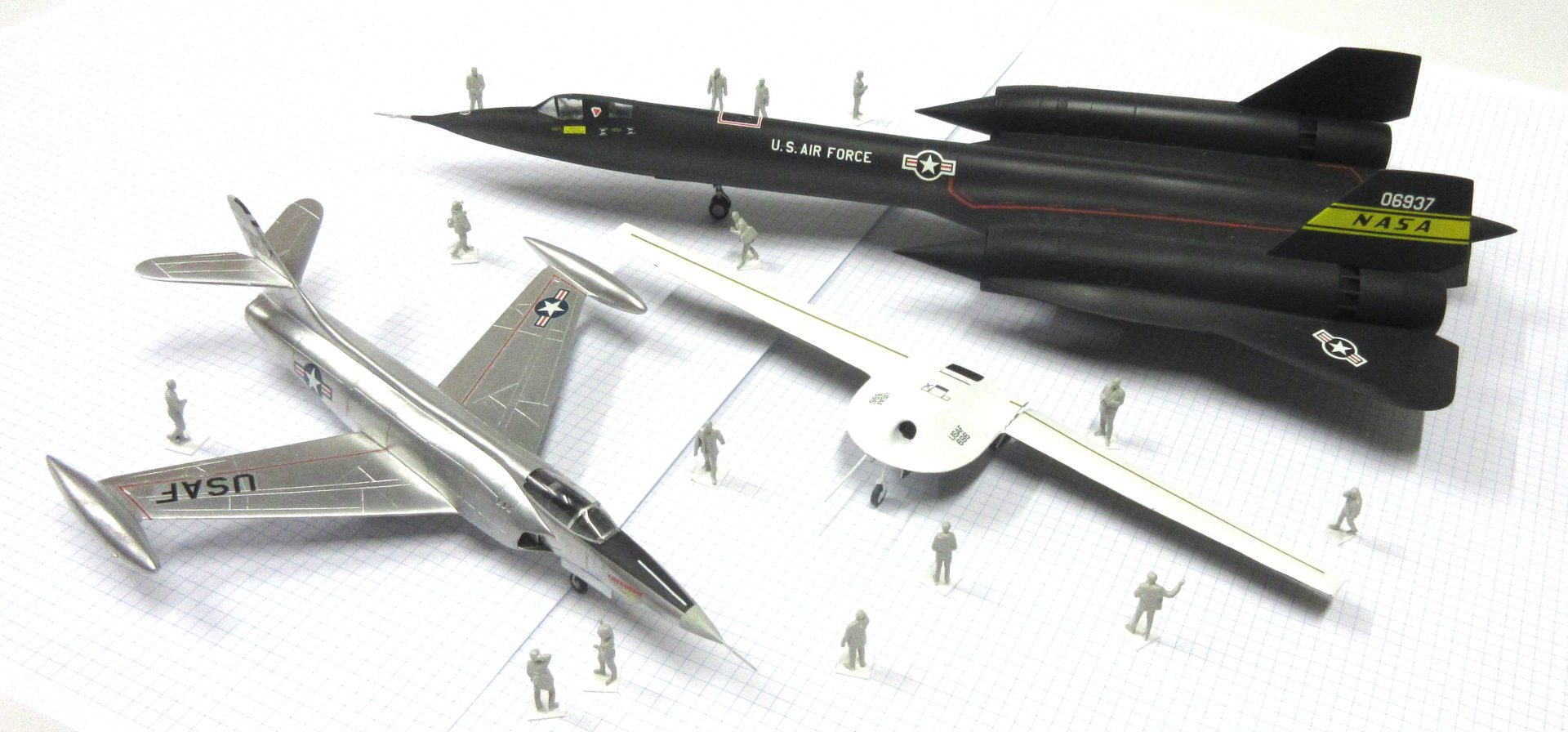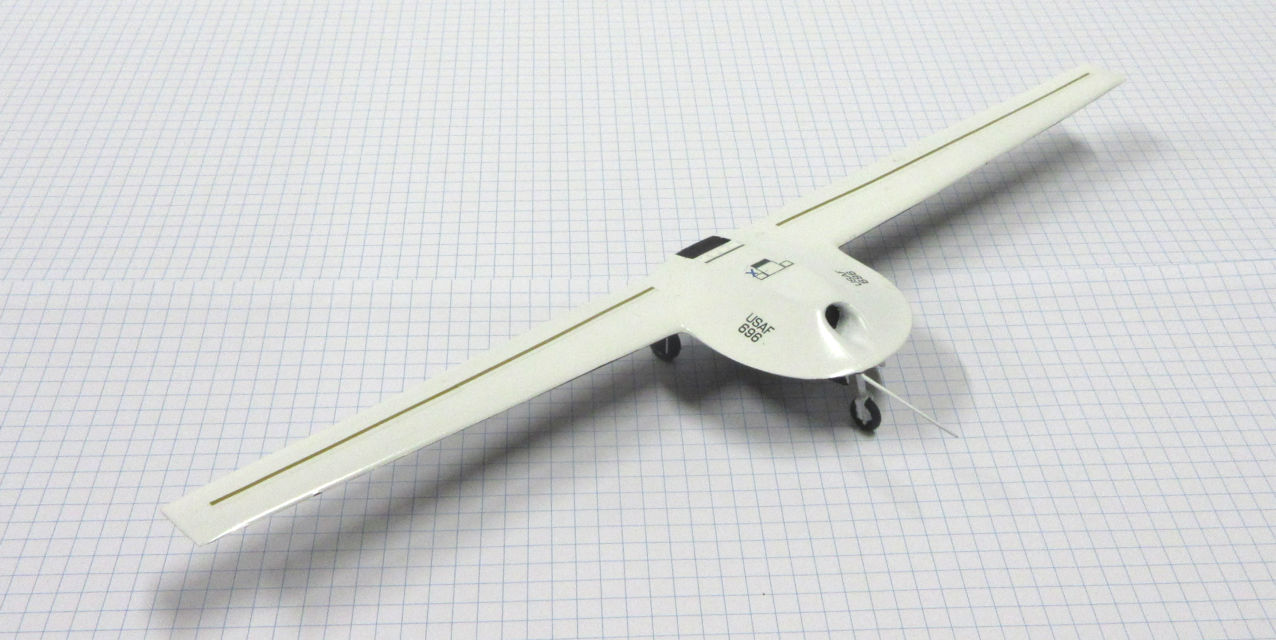Exotic Lockheeds
Lockheed XF-90 – Lockheed Martin RQ-3A – Lockheed SR-71

The Lockheed company has been making aircraft successfully since the 1930s. During World War 2 it manufactured such famous aircraft as the P-38 Lightning, the Hudson and the Constellation. In post war years it went on to make the Super Constellation, the F-104 Starfighter and the C-130 Hercules. Some of its most famous aircraft have been designed by the secretive ‘Skunk Works’ including such aircraft as the XF-90. SR-71 and F-117. Today let’s look of three of Lockheed more exotic aircraft, one well known and the others not so much so.
Lockheed XF-90 in 1/72 by Anigrand
One of the first aircraft to emerge from the Skunk Works was the XF-90 which was designed in the mid to late 1940s to give the United States a long range jet powered bomber escort and penetration fighter. It took some ideas from Lockheed’s earlier P-80 Shooting Star combined with more advanced technologies including swept wings and afterburners. Two prototypes were made, the first one flying in June 1949. However, they were underpowered so they did not reach expected performance levels and did not enter production. The first prototype was tested to destruction and the second survived three atomic bomb tests and is now on display at the National Museum of the United States Air Force.
There have been several kits of this aircraft, most early vacforms. When I made this model the best that was available was the Anigrand full resin kit and is a fairly simple and easy build. Since then a limited run injection moulded kit from Akatombo has been published which does not to be much of an improvement on the Anigrand kit, judging from the photo on Britmodeller.
Lockheed Martin RQ-3A in 1/72 by Unicraft
This aircraft was an unmanned aerial vehicle designed with stealth capability so it could conduct high altitude reconnaissance in hostile air environments. The first one made its first flight in March 1996 but crashed on its second flight. Three more were built, of improved design to increase stability, but only the first of these flew before the project was cancelled in January 1999 due to stability problems and cost overruns. Two of them are on display at the National Museum of the United States Air Force and the Museum of Flight and the third is held in storage by the National Air and Space Museum.
This model was made from the only available kit of this aircraft. Unicraft seem to specialize in some rare and exotic aircraft with these limited run resin kits. I found this one to be easier to make than it first looked when I opened the box, but a lot of preparation went into the parts before it could be assembled and painted. I could find no other mention of this model on the interweb so perhaps this is the only model that has been made from this kit.
Lockheed SR-71A in 1/72 by Academy
This aircraft is one of the most famous of all time, partly because of its very high performance and partly because of its unique appearance. It’s reported maximum speed is 3,540kmh at 80,000 feet. The SR-71A is the most common version of this aircraft, there also being single seat, trainer and interceptor versions. It was designed to conduct very high altitude and very high speed reconnaissance missions around the world. The first one made its maiden flight in December 1964, they entered service in January 1966 and were retired in 1999. Thirty-two SR-71s were built and twenty-one of them are on display in museums.
This model was made from the Academy kit which was first published in 1985 and has since appeared in several other boxings. There are also kits by Hasegawa, Italeri, Revell, Monogram and others that all date from around the same period and I would not be surprised if at least some of them are the same kit published under several different brand names. This kit presented no problems in construction or painting, though getting the black colour scheme to look good is a serious challenge. Most build reviews suggest shades of dark grey but I followed the advice I read somewhere years ago and added a bit of dark blue to my black paint and I think it looks pretty good. A comment on the Fine Scale Modeler forum rates the Testore/Italeri kit as the best of the bunch when it comes to making a model of this aircraft and nobody seems to disagree. Even so, I think my Academy SR-71 looks very nice thank you.



